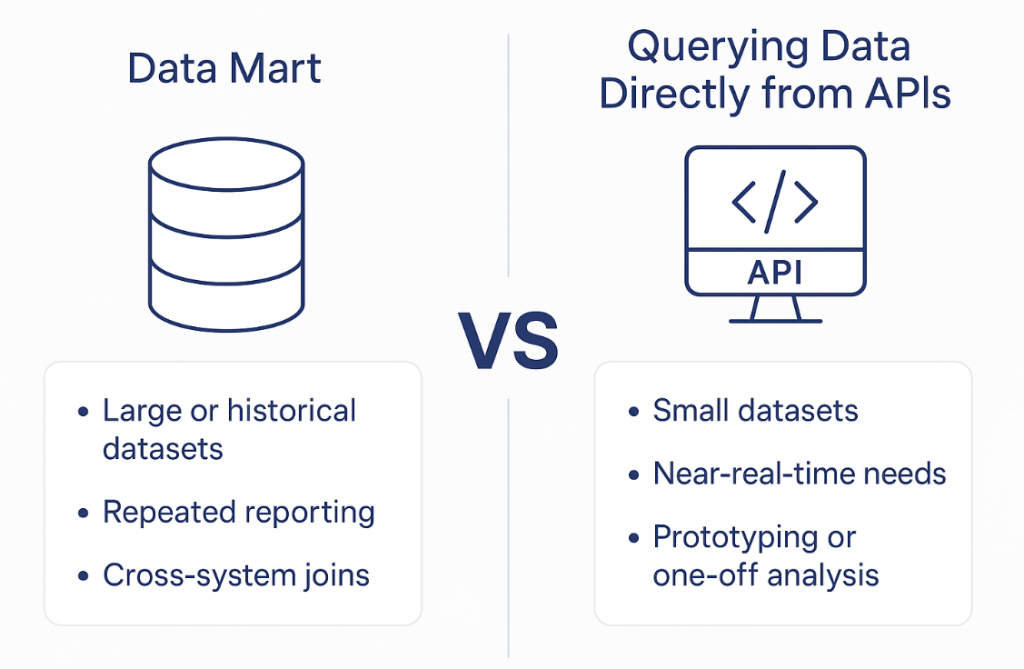Whether you use a data mart or query data directly from APIs, a hybrid strategy often delivers the best balance.

In today’s data-driven enterprises, teams often face an architectural decision early in their analytics journey: should we query data directly from third-party APIs, or should we ingest and model the data in a centralized data mart?
Both approaches have their place—what matters is understanding when each is appropriate.
Direct API Querying: Fast, Lightweight, and Flexible
Querying data directly from a third-party API can be ideal when:
- You need real-time or near-real-time insights
- You’re working on exploratory analysis or a proof of concept
- The dataset is small and performance isn’t critical
However, there are limitations:
- Rate limits and throttling can slow down dashboards or automation
- Uptime dependencies and API schema changes may cause instability
- Cross-system joins and historical comparisons are often unsupported
- APIs are not optimized for large-scale analytics or reporting
Data Marts: Reliable, Scalable, and Analytics-Ready
A data mart is a subject-specific, curated layer of your data architecture—usually part of a data warehouse—that allows for consistent and governed reporting. It’s the better choice when:
- You need to join data across multiple sources
- You require data versioning, cleansing, and transformation
- Users demand fast, self-service dashboards
- You’re working with large volumes of historical data
Of course, there’s added complexity: ETL/ELT pipelines, storage costs, and maintenance overhead.
Making the Call:

Our Take: Think Hybrid
At Keller Schroeder, we often guide clients toward a hybrid architecture—leveraging direct API connections for real-time needs and data marts for enterprise-wide reporting, compliance, and scalability.
Understanding the trade-offs and aligning with business goals ensures the right foundation for data-driven decision-making.





